After all, a good part of IT projects goes over the budget and time due to excessive meetings and lack of information.
Common sense says that planning is to detail the path between the current state, which we will call and AS-IS, and the intended state, TO-BE. Atlas solution, from Link, allows precisely to provide reliable information about the state of the organization that is emerging, resulting from the progress and changes of ongoing project and plans of projects in the pipeline. Only in this way will we be able to provide the necessary and accurate information for planning the next wave of projects.
The current pace of change requires agile planning and architecture methods, which are not compatible with the traditional approach to static documentation and disconnected from reality. This is so much important as the speed of change, the extent of transformation and the scarcity of resources for the recurrent adaptation of planning and architecture future projects.
The lack of agile planning and architecture methods can be compared to driving a car at speed just by looking at a picture of the road from the past (looking backwards) or even the preset (looking down to the road under the car). Instead, we drive with our eyes set to the car near future position, few tens of meters or a few seconds ahead in time, in what we call the can emerging position if no abrupt decisions are taken, as breaking.
Although developing new applications is getting easier and faster every day, we know how common the IT projects to go over the planned budget and deadlines, becoming elements of risk for the processing and digitization of organizations.
Planning a project to transform an organization is always difficult due to the multiple variables to consider, particularly IT, which easily grows in complexity. One of the main causes is the lack of instruments to deal with this complexity. Common sense says that planning is to detail the path between the current state, which we will call and AS-IS, and the intended state, TO-BE.
In general, we can say that all organizations have a sense of AS-IS and TO-BE when drawing up their multi-annual transformation plans. With higher or lower detail, they know their current state and where they want to go.
However, for planning transformation initiatives, or projects, knowledge of the current state is manifestly insufficient. Take as an example that we are today planning an integration project that will start in 4 months. By then, there are several projects to finish whose results change the integration scenarios of our project. To plan our integration project, we do not need the organization’s current state, as it is and will be changed until the beginning of our project, but rather the state of the organization at the beginning of our project.
But what tools does management put at the disposal of project´s teams to figure out the state of the organization at the time of the beginning of their projects? Usually none! Instead, they make up meetings with teams of other projects they believe might impact their project. This requires a lot of effort and time that we don’t typically have. In addition, “word of mouth” and the use of Excel sheets as an almost universal tool for transferring this information at meetings is very error-prone and time-consuming.
Even if we have all the information from other projects about the changes they will bring about in the coming months relevant to our project, such information might change in the meantime due to unforeseen situations in other project´s execution. So, what tools we have to help to foresee the state of the organization at the beginning of our project so that one can plan our project with reliable, or as reliable as possible, information? The traditional is to have meetings and more meetings…
In practice, statistics point that at least 20% of the projects go over budget and time due to the lack of accurate information during the planning. The difficulty in collecting worthy information is, in fact, the reason why we find many organizations that plan projects in two phases: A very preliminary one a few months in advance and another more detailed one at the project start. Naturally, when the project starts, we will have less time and options to choose from than if we had the same information months before.
The organization cartography solution Atlas from Link allows accurately provide reliable information about this from the organization that is emerging, resulting from the progress and the changes in the implementation of projects in the pipeline. Only in this way will we be able to provide the necessary information for planning the projects that follow.
To this end, Atlas is prepared to receive information over the whole cycle of systems development, from planning to deployment:
- From the ongoing projects’ progress, through integration with project management solutions to obtain information on the respective milestones;
- From the artefacts that are being developed, through interaction with development environments and pipelines CICD in each project;
- From discovering the artefacts deployed in each production infrastructure, whether in the cloud, VMware or standalone servers.
All this information is collected and presented on architectural maps with a time bar that allows the navigation from the past to the present and the emerging future organization state based on current project execution. In addition, it interacts with project teams both to notify changes that have an impact on their projects and also to request the necessary information to infer dependencies between projects.
The more the management values adherence with planned budget risks, costs and deadlines, the easier it is to have reliable information for planning the following projects and the fewer surprises they will have.
For more information, contact us by email.
AUTHOR:
Pedro Sousa, Atlas Director at Link. Associated Professor of Enterprise Architecture and Business Process Management and Engineering at Instituto Superior Técnico
14/05/2021



